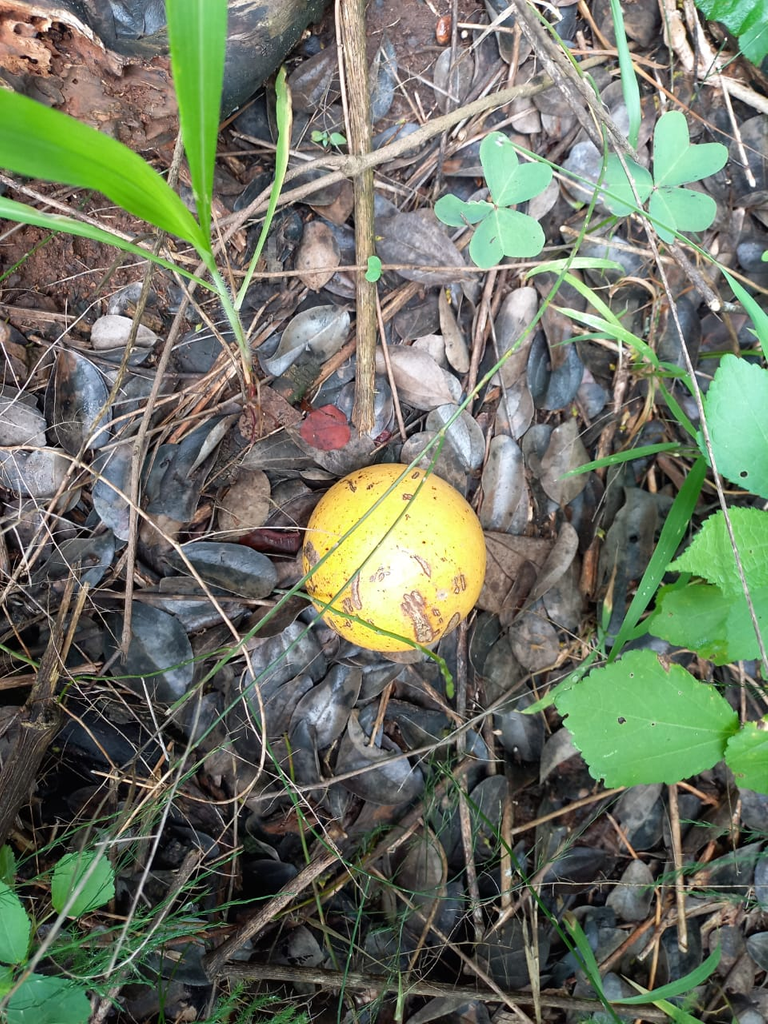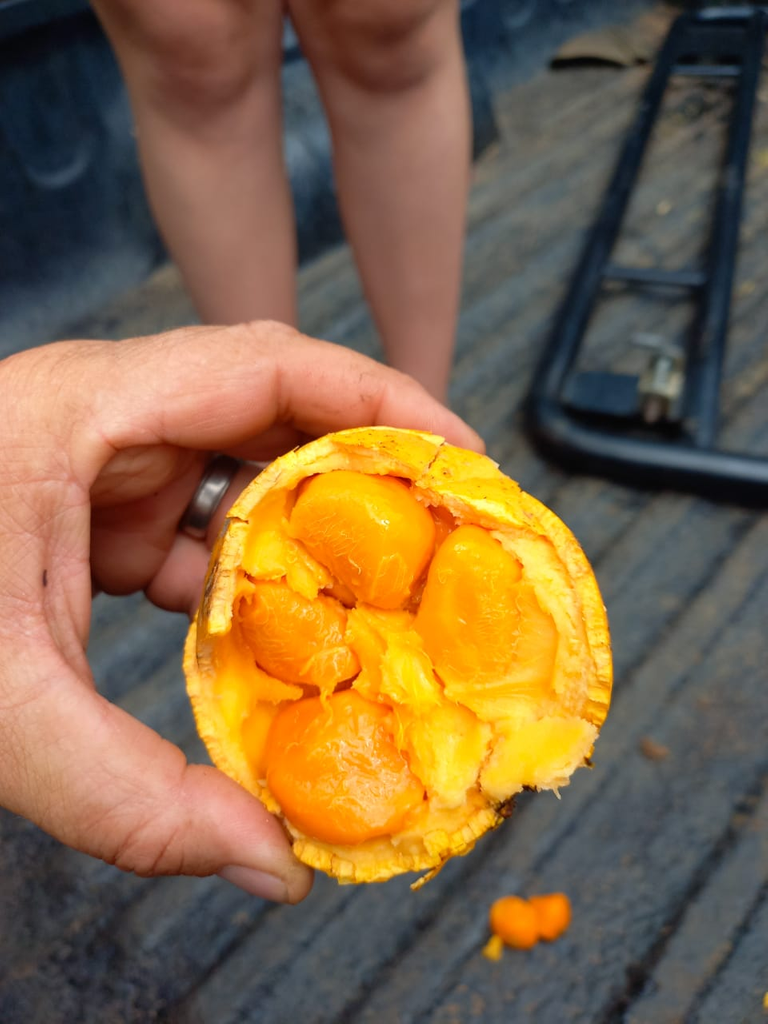At heart, I am a very sentimental person, and today while out in the bush, I saw something that brought back childhood memories that I didn't even know I had.

I went to go visit my brother on a farm that he is working at today. And he decided to take me on a drive through the estate. We drove through the mango orchards and cattle pastures for a while until we reached a farm division gate. This was a gate that lead to an adjoining game farm belonging to the same farm owners. We opened the gate and continued our journey. While driving through the landscape and meandering dirt roads, slippery from recent rains we saw gorgeous landscapes, Impala and ostridge with their offspring, and a glorious selection of indigenous trees.
But the thing that captured my mind the most, was driving down a dirt path when the air was suddenly filled with an all too familiar aroma, one that I could not immediately place. It very soon became apparent that the scent that drew me closer was that of the Monkey Orange tree, whose fruits lay strewn across the grass-laden soil below it.
As children, we would often forage the bushveld for seasonal fruits from indigenous trees. And this particular fruit was at the top of the list of our bushveld gems. Not only does this tree provide fruits with a uniquely distinct flavor and texture, but the fruits also doubled as toys. The hard and well-rounded shells of the monkey orange fruits made them ideal for use as oversized marbles and provided hours of entertainment before becoming a healthy yet sweet treat after.

This was quite a rare find, and it immediately took me back to my childhood days. A simpler time when the biggest stress factor in life was being home in time for dinner. It was beautiful that I got to share this with my brother, my best friend and partner in crime as a child.
More about the Monkey Orange (Strychnos Spinosa)

The Monkey Orange is a large round fruit about the size of a grapefruit. Inside the fruit is centered around a cluster of large seeds. Each seed can be taken out at the fruit is then sucked off the pit. The taste is a sweet and sour combination that I would describe as somewhere between a ripe mango and a papaya. A single fruit can weigh up to 0.5kg and has a very thick woodlike skin that can be cracked open with a mild amount of force. These fruits can keep very long and can be stored for months before going off.
These fruits are very high in vitamins B & C. It is also rich in crude protein, phosphorus, magnesium & potassium, and makes for a nutritious snack. But as with everything in Africa, there is more to this fruit than what meets the eye.
These fruits are eaten fresh, but they can also easily be prepared or preserved in the form of juices jams and wines. Traditionally an extract made from the pits of these fruits was used to treat snakebites due to their high strychnine content, this also makes this fruit as poisonous as it is nourishing - go figure, only in Africa right?
Another great way that these fruits have been utilized was by making a hole in the stem section of the fruit and then removing the contents, once the fruit shell is empty and cleaned, dried seeds were then thrown back into the casing, while the hole was sealed off with a part of the tree stem. This was then used as a musical shaker in traditional music - similar to a maraca.
And one of my personal favorites is that the fresh leaves of the Monkey Orange tree can be soaked in water and prepared as an organic insecticide.
There is also a great deal of medicinal applications for this plant, and if you like you can read more about that here
Propegating Monkey Oranges

Monkey orange prefers well-drained soil. and can easily be planted from seeds, but propagation can also be done through grafting.
I am going to attempt planting them from seeds, this will be my first attempt at this and in preparation, I have taken the seeds out of the hard encasing shell and scrubbed them down in clean water to remove all the fruit from the seed. The seeds are currently sitting outside in the full sun to dry out. Once they are completely dry to the touch, the seeds will be soaked in lukewarm water for about 24h and will then be planted in planting bags in a mixture of well-draining potting soil,
I remember seeing these in Zimbabwe/Rhodesia and they had a different name back then which is kind of derogatory now. If I remember correctly the outer skin is fairly hard and not like a normal orange. The farmers used them as bait traps to catch the baboons.
haha, a fruit by any other name would taste just as sweet 🤣
I hear you, and I know exactly what you mean re the name. So many tree names have been changed for that reason - even the Afrikaans name of the praying mantis has been changed
Crazy as what is wrong with Praying Mantis. This orange fruit the farmers used to drill a hole just big enough for a monkeys hand to reach in and gran the fruit. The problem is the monkey wont let go and now his hand is stuck waiting for the farmer to come and grab him.
The Afrikaans name used to be 'hotnotsgod' which was deemed derogatory. "Hotnot' was a term used back then for the bushmen or San people.
It is quite interesting if you look into it. I found this little section on the praying mantis while I was looking it up - thought I'd share :D
"One of their Afrikaans names is Hotnotsgod – because Europeans used to believe that the Bushmen, or San, worshipped them. The San name for it is Kaggen, or Cagn, which is where the confusion crept in – Kaggen can also mean ‘god’. He certainly is seen as a deity, but he is a shape-shifter, and a praying mantis is only 1 of his many forms. There are so many stories about him. He can appear as a vulture, a snake, a hare, a human. Kaggen is a trickster, and can be wise and helpful, or mischievous and foolish. Sometimes he lives as an ordinary man doing ordinary things. But Kaggen is also a creator of life, and his favourite creation was the eland antelope. According to 1 myth, his 2 sons killed it by accident while hunting, but it was brought back to life after its blood and fat had been spilt on the ground. In fact, a herd of eland arose from it. But the eland never again trusted humans." ~ source
Thanks. Interesting as I can understand that term but praying mantis is what it looks like from a side on view and names should be left in my opinion if they are not obvious as the only ones looking it up and demanding change are most likely racist themselves for even thinking this. The street name change are pathetic considering what they have changed them too and never thought insects would be rebranded. Durban North has Fidel Castro Avenue and I know the streets from what they originally were named.
I couldn't agree with you more, they certainly have a lot more important things to spend Government time and money on.
And now they are changing the mint again as well. I think they are trying to create scarcity, but that doesn't work if every second south African coin is a 'limited edition' coin.
For fear of going off on a tangent - I am going to leave it at that.
Thank you for sharing this post on HIVE!
Your content got selected by our fellow curator rezoanulvibes & you just received a little thank you upvote from us for your great work! Your post will be featured in one of our recurring compilations which are aiming to offer you a stage to widen your audience within the DIY scene of Hive. Stay creative & HIVE ON!
Please vote for our hive witness <3
That's awesome, thank you.
Amazing! I'd like to have this kind of fruit in my yard but wonder if it grows in my place. It looks yummy and as you described it as it tastes like mango and papaya, it must be one of my favorite flavors. Thanks for sharing! 😍